Is a tulip tree a magnolia or not?
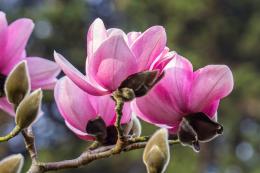
Sometimes in botany there is confusion with certain plants due to similar, almost identical names. The tulip tree is no exception. One of the plants with this name grows in Africa and belongs to the Begoniaceae family and is related to magnolias does not have. Another tulip tree is the magnolia with flowers similar to tulips, it is also called lyran, tulip lyriodendron or true tulip tree.
Content:
- Tulip tree, plant description
- How to grow a tulip tree on your own
- How to plant a tulip tree in the ground
Tulip tree, plant description
The Magnoliaceae family is rich in species that have high decorative properties. The lyran or real tulip tree confirms this. The plant got its name because of its large, lyre-shaped leaves. In the wild, the plant has two types. One species, the true tulip tree, is common on the eastern side of the United States, the other, the Chinese liriodendron, grows in China.
Its use in landscape design still limited. It should be noted that if two types of lyriodendron grow side by side, then they can cross-pollinate and obtain hybrid forms. Tulip liriodendron growing wild is a fast-growing deciduous tree. Its height is 35 - 50 m.
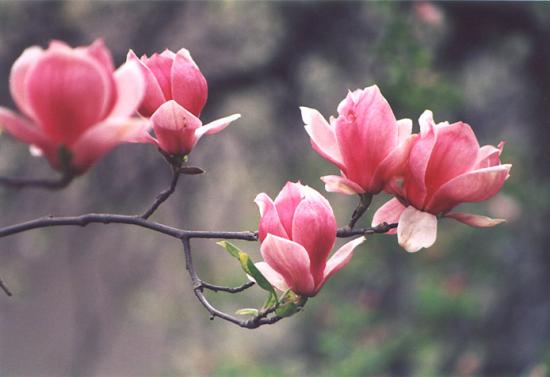
Wood is valued in landscape design for its high decorative qualities. The trunk is straight and high. It is covered with light gray bark.Young trees have smooth bark, only with age does it acquire deep grooves. It should be noted that the tulip tree is a real long-liver; there are trees almost 500 years old.
In the first years of life, the crown of the tree is strictly pyramidal; with age, it takes the shape of a wide pyramidal tent or a rounded outstretched one. The size of the leaf blades exceeds 15 cm, their shape is lyre-shaped, the color is bluish-green, and in the fall the leaves turn bright yellow. The leaves of young trees are more rugged and larger in size.
The flowers of the plant are large, fragrant, with a sweet aroma. The shape is similar to white-green tulips with bent petals and a yellow spot in the center. The tree has been cultivated since the end of the 17th century. Recommended for growing in regions with short-term winter frosts down to - 29 -30 degrees. Despite the fact that it is most often used in landscaping the city of Sochi, it is quite successful grown at the latitude of Oslo, in St. Petersburg.
How to grow a tulip tree on your own
The most convenient way to grow a tulip tree on your property is to purchase a seedling and plant it. However, this possibility is not always available. It is much easier to purchase seeds and sow them yourself. Important! The seeds of this plant lose their viability very quickly and are usually sold in the fall, immediately after collection.
Purchased or collected seeds are not stored; they must be immediately prepared for planting. For this purpose, the seeds are placed in a suitable container and filled with warm water for a day. After that, they are transferred to a soap solution and washed. Then rinse with clean warm water and lightly dry. Dried seeds can be lightly crushed with your fingers.
Such techniques allow you to wash away the layer of essential oils and speed up germination. seeds. Immediately after the preparatory activities, the seeds must be embedded in the soil to a depth of about 20 mm. To do this, fill a suitable container with a universal soil mixture, make a hole of the required depth, place a seed in it and place the container in a cool place.
Important! The optimal depth of a pot or container should be at least 30 cm, because the plant will spend two years in this pot. From the end of January, the sown seeds need to be watered. And in March, the containers are transferred to a well-lit windowsill. As soon as the threat of frost passes outside, the pots with seedlings are taken out into the open air.
Video about blooming magnolia:
During the first summer, the tulip tree grows 30 - 40 cm. If seedlings have not appeared by mid-summer, then you need to be patient and continue to water the pots. Perhaps next year the efforts of patient gardeners will be crowned with success.
For the winter, boxes with young tulip trees should be placed in a cool cellar, lined with peat. To a permanent place for a tree planted only in the third year. By this time, the ground part can reach a size of about 1 meter or even more.
How to plant a tulip tree in the ground
Before planting in the ground, you need to remember that the tree is quite tall and with age its crown has a decent projection. This plant is not for small gardens where all the vegetation must fit on 4-5 acres. The plant should not be planted close to the house or walkways. The place should be well lit by the sun with the possibility of shading from direct rays.
The soil can be loamy or sandy loam with a good fertile layer. The planting hole must correspond to the root system. A mixture of turf soil and rotted compost is poured into the bottom of the hole.
The seedling must be replanted carefully, since the young tulip tree has fragile roots. When covering the roots with soil, do not compact it too much. After planting, the tree is watered and the watering area is mulched. In the first two years, care comes down to watering, and this needs to be done every three days in the absence of rain. For one watering you need 2-3 buckets of water.
The first fertilizing is also carried out two years after planting. To do this, add 1 liter of mullein infusion, a tablespoon of carbamide and ammonium nitrate to 10 liters of water. Fertilize after watering. It should be noted that the plant is highly resistant to diseases and pests. To preserve the plant in winter, for the first three years it needs dry shelter with spruce branches or other materials.
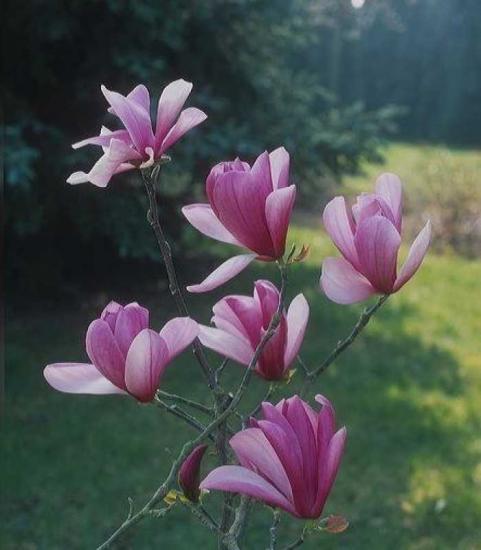
If the tree is tall, then the shelter should reach at least the second level of branches. The tree trunk circle is covered with a layer of sand and peat. If everything is done correctly, then in the first years the tree will delight with elegant leaves; in 7-10 years the first flowers may appear.


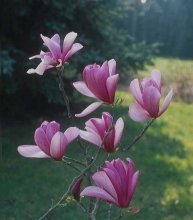



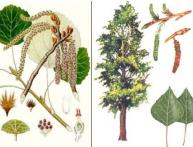
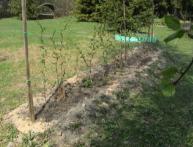
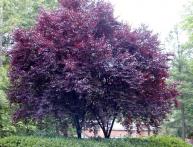
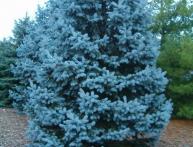
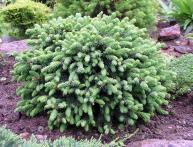
Comments
The tulip tree is very beautiful when many flowers bloom on it, but I have only seen magnolia in the south, and it does not grow in our region. Perhaps there are some regionalized specimens, but I have not seen any.